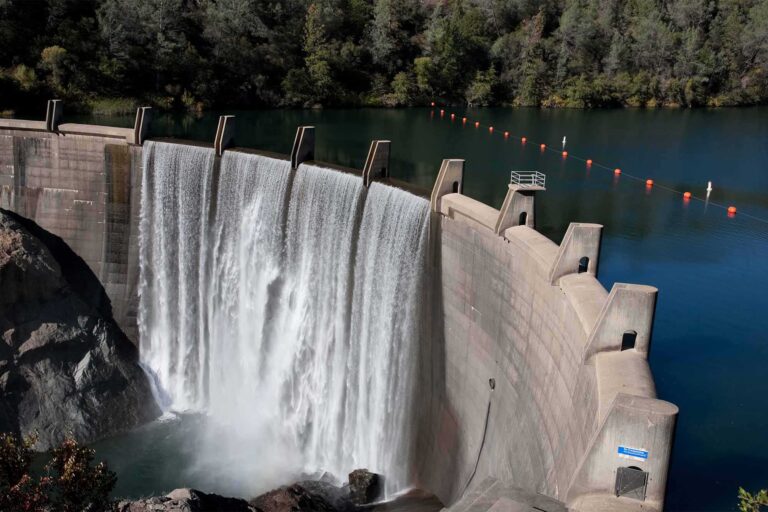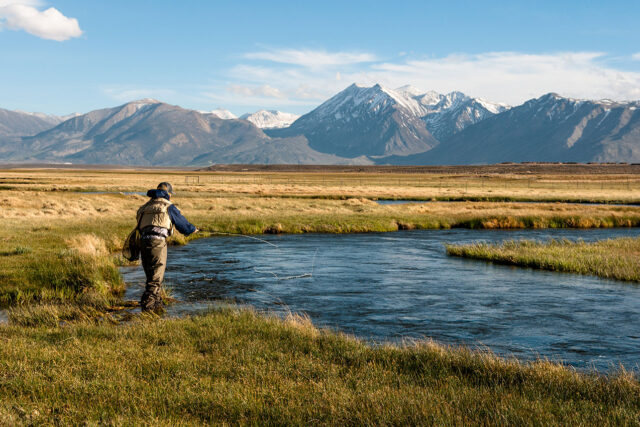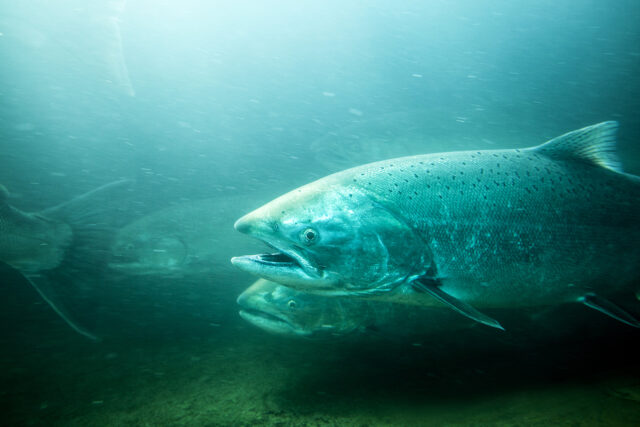Highlights
- Although large dams are essential for managing California’s water, they have significantly harmed native fishes.
- Reservoir storage is needed—and can be managed differently to support the environment.
- Reserving reservoir storage space for the environment—along with a share of inflow—can help improve river health below dams.
- California already has good models for how to govern and fund this approach, which many ongoing regulatory and planning efforts would benefit from adopting.
California needs a new approach to mitigate the harm dams cause
In California’s variable climate, dams are essential for water supply, hydropower generation, and flood management—and their role will grow as the climate warms and droughts become more intense. But dam construction and operation has damaged the health of California’s rivers. In the Central Valley, large, multi-purpose dams are the primary cause of the decline of many native fishes, particularly salmon and steelhead. These dams have cut off access to high quality habitat, and they change flow and water quality downstream in ways that harm these fish.
Yet paradoxically, dams have also become essential for efforts to improve ecosystem health. Water stored in reservoirs behind dams—especially cold water for fish like salmon and steelhead—is vital to conservation efforts and to avoid extinction of numerous native species. But the current approach to conservation relies on narrowly defined, inflexible regulatory standards—and it is falling short. Finding better ways to operate dams and manage environmental water is key to improving river health, both now and in a warmer, more volatile future.
Giving the environment a water budget—and a place to store it—is a better approach
Making the environment an operational priority is a better way to manage rivers with large, multi-purpose reservoirs. This entails giving the environment a water budget—with assets including a share of both inflow and storage space in the reservoir. This water budget functions like a high-priority water right.
- Our modeling shows that having both water and a place to store it allows for flexible management, with timing of releases varied to create the most environmental benefit and to respond to changing conditions.
- This approach generally uses environmental water more efficiently than a share of bypass flows without storage.
- Although ecosystem water budgets—particularly large ones—can reduce water available for other users, this approach can also benefit some users by reducing regulatory uncertainty.
- We recommend designating an independent ecosystem trustee to govern environmental water, modeled after the Restoration Administrator of the San Joaquin River Restoration Project.
- Reliable funding for ecosystem support is also essential—and contributions from both water users and state and federal budgets are appropriate.
Planning and regulatory efforts should incorporate this new approach
Multiple planning activities and regulatory proceedings could use water allocated to the environment more efficiently if they incorporated storage space for environmental water, along with a portion of inflows. These include:
- The California Environment Flows Framework is setting criteria for functional flows (components of a river’s flow that sustain native species and their ecosystems) in rivers throughout the state. Flexible operation of reservoir storage will be necessary to meet these goals in rivers with large dams and multiple competing uses of water.
- The Lower San Joaquin River component of the Bay–Delta Plan Update relies on bypassing a portion of reservoir inflow into rivers to meet its environmental objectives. This effort could better meet these objectives if it used a functional flows approach, supported by flexibly operated storage in tributary reservoirs.
- Voluntary Agreements are being negotiated as part of the broader Bay–Delta Plan Update for the Sacramento–San Joaquin Delta watershed. The agreements would be strengthened if new water—along with water that is currently assigned by regulation to environmental uses—was granted storage space and managed flexibly and in a regionally coordinated fashion.
- A Coordinated Long-Term Agreement to govern Central Valley Project and State Water Project operations is being renegotiated. Water quality and endangered species protection would benefit from the creation of a well-defined budget and reservoir space for the ecosystem.
- State investments in environmental water are growing significantly, creating a unique opportunity to expand assets available to the environment to improve freshwater ecosystem conditions.



